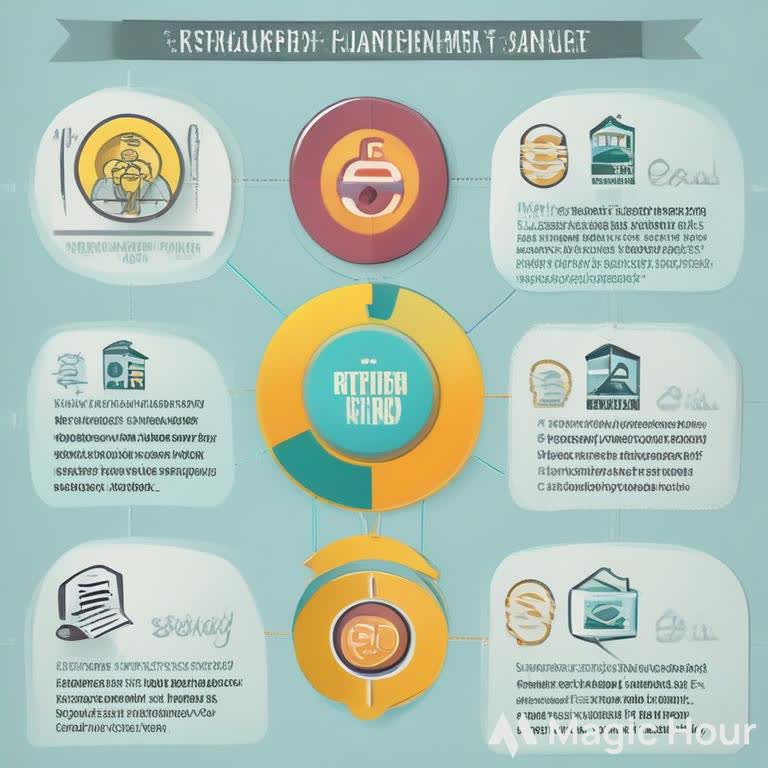Planning for financial stability during retirement is crucial for ensuring a comfortable and worry-free post-work life. With careful planning and strategic decision-making, you can build a robust financial foundation that supports your lifestyle goals and provides peace of mind. This blog explores essential strategies and tips for planning your retirement finances effectively.
1. Assess Your Retirement Goals
Before diving into financial planning, it’s essential to clearly define your retirement goals. Understanding what you want to achieve will guide your savings and investment strategies.
- Lifestyle Preferences: Determine the type of lifestyle you envision in retirement. Consider factors such as travel, hobbies, and where you plan to live.
- Budgeting Needs: Estimate your expected expenses in retirement, including housing, healthcare, and daily living costs. This will help you determine how much you need to save.
SEO Tip: Use keywords like “retirement goals planning” and “retirement budgeting” to attract readers interested in defining and achieving their retirement objectives.
2. Calculate Your Retirement Savings Needs
Accurately calculating how much you need to save for retirement is crucial for financial stability.
- Retirement Savings Calculator: Use retirement savings calculators to estimate how much you need to save based on your desired retirement age, lifestyle, and expected expenses.
- Inflation Impact: Account for inflation when planning your retirement savings. The cost of living tends to rise over time, so ensure your savings grow sufficiently to keep pace.
SEO Tip: Include terms like “retirement savings calculator” and “impact of inflation on retirement” to engage readers seeking precise savings strategies.
3. Build a Diversified Investment Portfolio
A well-diversified investment portfolio is essential for growing your retirement savings and managing risk.
- Asset Allocation: Diversify your investments across various asset classes, including stocks, bonds, and real estate, to balance risk and return.
- Adjust Over Time: As you approach retirement, gradually shift your investment strategy from growth-oriented assets to more stable, income-generating investments like bonds and dividend-paying stocks.
SEO Tip: Use phrases like “diversified retirement portfolio” and “asset allocation for retirement” to attract readers interested in effective investment strategies.
4. Maximize Retirement Accounts and Benefits
Utilize retirement accounts and benefits to optimize your savings and tax advantages.
- 401(k) and IRA Contributions: Contribute to retirement accounts such as 401(k)s and IRAs. Take advantage of employer matching contributions and tax-deferred growth.
- Roth IRAs: Consider Roth IRAs for tax-free withdrawals in retirement. Contributions are made with after-tax dollars, but withdrawals are tax-free if certain conditions are met.
- Social Security Benefits: Understand your Social Security benefits and the optimal time to start claiming them. Delaying benefits can increase your monthly payments.
SEO Tip: Include terms like “maximizing 401(k) contributions” and “Social Security benefits planning” to engage readers looking to optimize their retirement accounts.
5. Plan for Healthcare and Long-Term Care Costs
Healthcare costs can be a significant expense in retirement, making it essential to plan accordingly.
- Health Savings Accounts (HSAs): Contribute to HSAs for tax-advantaged savings that can be used for medical expenses.
- Long-Term Care Insurance: Consider long-term care insurance to cover potential costs of extended care services, such as nursing home or home health care.
SEO Tip: Use phrases like “planning for healthcare costs in retirement” and “long-term care insurance” to attract readers concerned about medical expenses.
6. Create a Retirement Income Strategy
Develop a strategy for generating income during retirement to ensure financial stability.
- Withdrawal Strategy: Determine a sustainable withdrawal rate from your retirement accounts to avoid depleting your savings too quickly. A common rule is the 4% rule, but adjust based on your specific needs.
- Annuities: Explore annuity options for guaranteed income streams. Fixed or variable annuities can provide regular payments throughout retirement.
SEO Tip: Keywords like “retirement income strategy” and “sustainable withdrawal rates” will engage readers looking to secure reliable income during retirement.
7. Regularly Review and Adjust Your Plan
Financial planning is an ongoing process. Regularly review and adjust your retirement plan to stay on track.
- Annual Reviews: Conduct annual reviews of your retirement plan to assess progress and make necessary adjustments based on changes in your financial situation or market conditions.
- Life Changes: Update your plan to reflect significant life changes, such as health issues, changes in income, or shifts in retirement goals.
SEO Tip: Include terms like “annual retirement plan review” and “adjusting retirement strategies” to attract readers interested in maintaining their financial plans.
8. Seek Professional Advice
Consider working with a financial advisor to enhance your retirement planning.
- Financial Planning Expertise: A financial advisor can provide personalized advice, help with investment decisions, and develop a comprehensive retirement strategy tailored to your goals.
- Tax Planning: Advisors can also assist with tax planning strategies to maximize your retirement savings and minimize tax liabilities.
